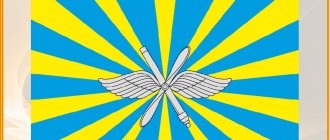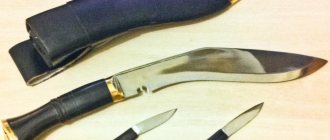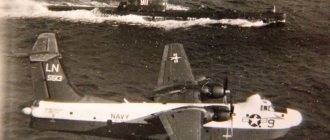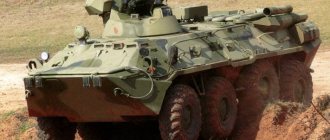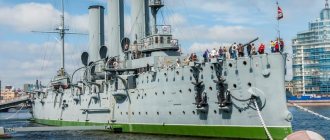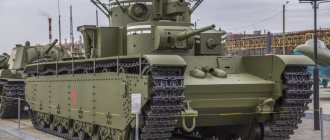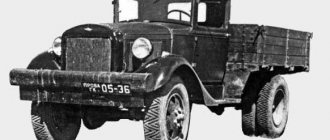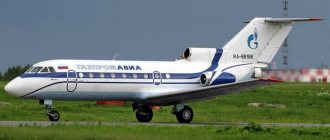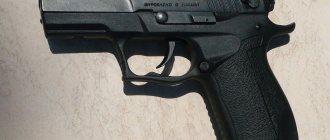BMP-3 TTX, Video, Photo, Speed, Armor
BMP-3 (Infantry Fighting Vehicle-3) is a Soviet and Russian armored combat tracked vehicle designed to transport personnel to the front line, increase their mobility, armament and security on the battlefield in conditions of the use of nuclear weapons and joint actions with tanks in battle .
Start of creation
Employees of the design bureau began work on the design of a new infantry fighting vehicle in 1977 at the Kurgan Machine-Building Plant. The gunsmiths took into account the experience of using the previous two models of infantry fighting vehicles. Option 3 was supposed to be a completely new light tracked armored vehicle. By 1977, Soviet designers already had serious experience in the development and use of equipment of this class. At this time, the USSR was creating a light tank for airborne troops. It was planned that, due to its small dimensions and weight, it would be suitable for landing from aircraft. At the same time, Soviet gunsmiths were designing a light reconnaissance tank for the needs of the ground forces. Both of these projects were unsuccessful. Nevertheless, the designers still had a lot of technical and engineering developments that they decided to use for the new armored combat vehicle. According to experts, over a hundred inventions were patented during work on the BMP-3. In accordance with global trends, armored vehicles should have enhanced security and increased firepower. Such parameters were proposed in 1977. As a result, several decades later, in contrast to the expected performance characteristics, the BMP-3 turned out to have a slightly higher combat weight and caliber.
BMP-3 - video
Developed by the Kurgan Special Design Bureau of Mechanical Engineering. BMP-3 is produced at OJSC Kurganmashzavod. It was first publicly demonstrated in 1990 at the Parade in honor of the 45th anniversary of Victory in the Great Patriotic War.
In 1997, the PRC acquired a license to produce the BMP-3 fighting compartment, which was subsequently armed with the Chinese Type 97 infantry fighting vehicles.
Development of the BMP-3 (“Object 688M”) began in 1977. In 1983-1986, tests were carried out and in 1987 it was adopted by the Soviet Army. During state tests in the Cape Opuk area, 2 BMP-3 prototypes were supposed to fire at coastal targets from a 30-mm automatic cannon while afloat at a distance of up to 1,500 m. The target was the T-55 tank, as a result the sight and observation devices of the tank were disabled, the 100-mm cannon was pierced in 4 places, and kinks and cracks appeared on the upper frontal part.
111 inventions and patents of specialists from the Special Mechanical Engineering Design Bureau were introduced into the design of the BMP-3.
The BMP-3 won the tender and entered service with the UAE Army in the amount of more than 600 vehicles. These vehicles were equipped with a French-made thermal imaging sight - the same sight is used on the main battle tank of the UAE army - Leclerc Tropic. The armored vehicle was also purchased by a number of other countries. After the run, the vehicle showed the highest performance in shooting tests; the BMP-3 covered a distance of 2000 km, unlike British and American vehicles.
Armored hull and turret
The frontal armor can withstand hits from 30 mm caliber shells from a distance of 200 meters. The roof and sides can withstand a 12.7 mm B-32 bullet from a distance of 100-200 meters. With installed modules of applied armor, taking into account the modules and dynamic protection, the weight increases to 22.7 tons, which does not affect the reliability of the chassis, but reduces its service life. During landing, partial protection is provided by the roof opening in a vertical position over the passage in the rear of the engine. Fuel tanks at the front provide additional protection.
Weapons and devices
The 100 mm launcher gun 2A70 weighs 400 kg and has a technical rate of fire of 10 rounds per minute, ammunition capacity (AM) of 40 rounds (22 in the automatic loader). ATGM 9K116-3, BC - 8 ATGMs (3 in the loading mechanism).
Automatic twin cannon 2A72/30 mm, ammunition load (AM) - 300 OFZ and 200 BT rounds. To achieve acceptable accuracy with automation based on recoil with a long barrel stroke, a movable coupling is used connecting the 2A70 and 2A72 barrels.
PKT 7.62x54 machine guns: 2 course guns in the hull, controlled by soldiers on the sides of the driver (or when they are dismounted - remotely and synchronously by the driver) and 1 coaxial with guns in the turret - muzzle velocity 855 m/s, ammo capacity - 2000 rounds to each. Stabilizer - 2E52-2. Shooting afloat is possible. The effective firing range is 4 km for a 100 mm gun, up to 3.5-6.0 km for ATGMs, 30 mm guns - 2 km. The maximum firing range of the 3UOF19 and 3UOF19-1 projectile is 6.5 km.
Pointing angles −6/+60(360) degrees. Spent cartridges from the gun are automatically ejected. The fire control system has auto and manual modes and introduces a large number of adjustments necessary for accurate shooting; it is possible to shoot at low-flying and hovering helicopters using the fire control system (however, a number of experts question the effectiveness of anti-aircraft fire from a 30 mm cannon with a rate of fire of 300 rounds per minute).
Mobility
The UTD-29 engine has a low height; a special passage above the engine is used to exit the landing force located in the middle part of the hull. The BMP-3 floats at a speed of 10 km/h, and water cannons are installed inside the hull. Capable of climbing a wall of 0.7 m, a rise of 30 and a roll of 25 degrees. Diesel engine. The track tension is controlled from the driver's seat. Transportability: by rail, road, air and sea transport. It can swim with minimal training, there is a reverse function for swimming, and there is a pump for pumping out water. All 6 road wheels on each side have hydraulic shock absorbers.
BMP-3K
The BMP-3K is a command infantry fighting vehicle, developed on the basis of the BMP-3 and intended for operations as part of a unit, battle control, communication with other units and with higher command levels. The main tactical and technical characteristics and weapons are similar to the BMP-3. The vehicle is equipped with navigation equipment, two radio stations, a receiver, intercom equipment for seven subscribers, an autonomous generator and a radar transponder. Radio station R-173, communication range up to 40 km.
BMP-3F
BMP-3F is a combat vehicle of the Marine Corps, created on the basis of the BMP-3 and is intended for combat operations by Marine Corps units, border and coastal troops in the coastal zone, on the coast and during amphibious landings. It differs from the BMP-3 in the increased buoyancy and stability of the vehicle, the equipment for self-entrenchment has been eliminated, a telescopic air intake pipe and a lightweight water-reflective shield have been installed, and water-reflective shields have been introduced on the turret. It has high maneuverability afloat, can move and fire with the required accuracy in water waves of up to 3 (wave 0.5-0.75m) and 2 points (0.1-0.5m), respectively. With the engine running, it can stay in the water for up to 7 hours and move at speeds of up to 10 km/h. Capable of going ashore in breaking waves and towing a similar product. The vehicle is equipped with a new main sight "SOZH" with a built-in laser rangefinder and an ATGM control channel (features better ergonomics and reliability - for example, the adjustment of the KDT-2 laser rangefinder as part of the 1K13-2 sight mounted above the gun barrel was easily lost with minimal external influence ).
BMP-3M with the Arena-E active protection complex
BMP-3M is an improved modification of the BMP-3. It surpasses the basic version in mobility and firepower thanks to the installation of a new turbocharged engine UTD-32T with a power of 660 hp. With. and an improved fire control system, which allows you to recognize targets and conduct targeted shooting at long ranges and speeds. It is distinguished by increased security due to the installation of additional armor screens and the Arena-E active protection complex, which protects the vehicle from enemy guided and unguided anti-tank missiles and grenades. The fire control system allows you to automatically recognize, track and attack targets in motion. The recognition range for a tank-type target is 4,500 m. Installed side screens protect against damage from armor-piercing bullets of 12.7 mm caliber, and also reduce the impact of a cumulative jet. The landing of soldiers is carried out through the aft hatch, which is somewhat complicated by the need to crawl through the engine.
BMP-3 with KOEP "Shtora-1"
BMP-3 with KOEP "Shtora-1" - provides effective protection of the vehicle against ATGMs with semi-automatic and automatic guidance systems. Its high efficiency was confirmed after the IDEX-2003 exhibition at the Makatra training ground. When firing at it with various ATGMs from a range of 3000 m, none of the missiles reached the target.
BMP-3 with Cactus remote sensing device
BMP-3 with Cactus remote sensing system - demonstrated at an exhibition in Omsk in 2001. Blocks of emergency protection, insensitive to shots from a 12.7mm bullet, are located on the side and frontal parts of the hull and turret together with rubber-fabric and lattice screens. Additional protection significantly increases the survivability of infantry fighting vehicles when using light anti-tank weapons with cumulative warheads. The weapon system, fire control system, internal layout, and logistics are similar to the base model. Due to the increase in mass, the infantry fighting vehicle cannot float. When additional protection is removed, this ability returns, since the water-jet engines are preserved. The machine has large dimensions in terms of width (up to 3.97 m) and body length (up to 7.16 m).
BMP-3 with the Bakhcha-U combat module
BMP-3 with the Bakhcha-U combat module is distinguished by a modern fire control system and a unified loading mechanism for a new ammunition load of guided and unguided 100-mm rounds. The 9M117M1-1 "Arkan" guided missile ensures the destruction of modern tanks with dynamic protection at a range of up to 5500 m (according to some sources - 6000 m). The ZUBK23-3 round with ATGM has a mass of 21.5 kg and a length of 1185 mm. The new 100-mm high-explosive fragmentation round ZUOF19 has a firing range of 6500 m and, compared with a standard projectile, its effectiveness and dispersion are 2.5-3 and 2 times better, respectively. The use of the new 30-mm armor-piercing sub-caliber projectile 3UBR8 "Kerner" significantly increases the effectiveness of firing at lightly armored targets.
BMP-3M Dragoon
BMP-3M "Dragoon" - modernization of the BMP-3M. The engine and transmission compartment was moved forward and the troop compartment was reconfigured; landing is carried out through a ramp. The power plant is a variant of the UTD-32 engine with a power of 816 hp. With. turbocharged, four-stroke, direct fuel injection, liquid cooled, multi-fuel, dry sump. There are three types of combat modules that the Dragoon can be equipped with: “BM 100+30” with 100 mm 2A70 and 30 mm 2A72 cannons; "BM 57" with a 57 mm cannon; "BM 125" with a 125 mm 2A75 cannon.
BMP-3 Derivation
BMP-3 "Derivation" - version with an unmanned AU220M module, including a 57-mm automatic cannon.
Vehicles based
BRM-3K Lynx
BRM-3K "Lynx" is a military reconnaissance combat vehicle. Designed for operations by reconnaissance and special units behind enemy lines. The body, power unit and chassis are similar to the BMP-3. The main armament is a 30-mm double-loading 2A72 cannon (rate of fire 300 rounds/min.) with a coaxial 7.62-mm PKT machine gun. To combat armored targets there are 4 ATGMs in the stack. The crew is armed with machine guns (1,800 rounds of ammunition) and 15 hand grenades. The vehicle is equipped with a target detection system and data transmission to the unit command, a 1G50 navigation system with a new gyrocompass, communications equipment (R-163-50U, R-163-50K, R-163-U, data transmission range up to 100-350 km), FVU and fire extinguishing system. Adopted into service in 1995, it is close to the BMP-3 in mobility and protection. The complex of reconnaissance devices provides search, detection and identification of targets in various conditions, processing and transmission of the received information to its intended purpose. It includes: thermal imaging reconnaissance device ShN71, night active-pulse surveillance device 1PN61, laser rangefinder PLD "Fauna-M" (1D14), radar system 1RL133-1 (PSNR-5 "Credo"), the transceiver of which is installed on a separate gimbal suspension and can be raised to a height of 1 m, as well as mounted on a tripod outside the machine. Built-in topographic and geodetic support tools (semi-automatic gyrocompass 1G50, navigation equipment TNA-4, etc.) provide the vehicle with digital navigation information and display its location on a topographic map. If necessary, an orientation sight can be used for these purposes, as well as turret devices together with a complex of reconnaissance equipment. The weight of the BRM-ZK "Lynx" is 19.6 tons, the crew is 6 people, the height is 2.57 m.
BT-3F
BT-3F - armored personnel carrier for the Marine Corps
BREM-L "Beglyanka" is an armored repair and recovery vehicle based on an infantry fighting vehicle, with a crane boom and a traction winch.
2S18 “Pat-S” is an experimental 152 mm self-propelled howitzer.
2S31 "Vena" - an automated 120-mm self-propelled artillery gun.
Object 699 is a universal tracked chassis.
UR-93 is a mine clearance unit based on the BMP-3. It was first demonstrated in 2007 in Nizhny Tagil at the RDE-2007 exhibition.
UR-07 is a mine clearance unit based on the BMP-3.
9P157-2 - combat vehicle of the Khrizantema-S anti-tank missile system
9P157-4 - control vehicle for the battery of the Khrizantema-S anti-tank missile system
9P162 - combat vehicle of the Kornet-T anti-tank missile system
TKB-841 - Russian experimental anti-aircraft self-propelled gun from the 30Yu6 "Pantsir-S1-O" anti-aircraft missile and artillery system
ADZM "Vostorg-2" - an air-transportable road-digging vehicle based on the BMP-3
ZAK-57 "Derivation-PVO" - anti-aircraft version with a 57 mm cannon.
Machine evaluation
Suvorov Sergey Viktorovich, press secretary of Military-Industrial Company CJSC, expert in the field of armored weapons, colonel of reserve tank forces, candidate of military sciences:
Before I had to operate the BMP-3 myself, I had repeatedly heard a variety of reviews about this vehicle, most of them negative and mainly from those who had not seen it in person. Over the course of three years, I was able to evaluate from my own experience all the disadvantages and advantages of the BMP-3. My opinion is that the car is wonderful, there is no other one like it in the world, which means that this car has the right to exist and further develop. These words are confirmed by the contract for the purchase of BMP-3 by the UAE army. But the UAE government made the decision to purchase these vehicles after comprehensive competitive tests in this country of the Russian BMP-3, the American M2A1 Bradley and the British MCV80 Warrior.
BMP-3 in the UAE army, 2003.
In service
— Azerbaijan — 88 BMP-3, as of 2016. In total, more than 100 units have been ordered. - Algeria - 100 BMP-3, as of 2016 - Venezuela - 123 BMP-3 and its modifications, as of 2016 - Indonesia - 54 BMP-3F, as of 2016 - Cyprus - 43 BMP-3, as of 2016. The supply contract was concluded in 1995, the vehicles were delivered from 1995 to 1996. The total value of the contract is $68 million. - Republic of Korea - 40 BMP-3, as of 2016. According to other sources, about 30 vehicles were transferred to pay off the USSR debt in 1995, the deliveries of which were carried out in the period from 1996 to 1998; about 37 more vehicles were transferred in 2002, deliveries of which were carried out in the period from 2005 to 2006. - Kuwait - 120 BMP-3, as of 2016. According to other sources, about 142 vehicles were purchased in 1994, deliveries were made between 1995 and 1997, and another 25 BMP-3 units were delivered in 2010. - UAE: UAE Ground Forces - 390 BMP-3, as of 2016. UAE Presidential Guard - 200 BMP-3, as of 2016 - Russia - 500 BMP-3; at least 22 BMP-3 were transferred to the Western Military District in 2016 under a contract providing for the delivery of more than 200 vehicles by the end of 2022. It is also planned to buy up to 70 BMP-3 infantry fighting vehicles delivered to pay off the national debt to South Korea. — Turkmenistan — 4 BMP-3, as of 2016 — Ukraine — 4 BMP-3, as of 2016 — Sri Lanka — 45 BMP-3, as of 2007
Status unknown - Greece: 420 BMP-3 ordered in 2008 for more than 1.2 billion euros. On June 22, 2009, the final stage of the contract for 1000 vehicles was announced. But due to the economic crisis, the contract was frozen. — USA: 1 BMP-3 unit delivered from Ukraine
Service and combat use
Used by the Russian armed forces during the First Chechen War. Used by the UAE when intervening in the armed conflict in Yemen, including, probably, transferred to the troops of South Yemen. It was in Yemen that the only known combat loss of the BMP-3 occurred: one of the vehicles belonging to the UAE was blown up by an anti-tank mine planted by the Houthis.
Inside the BMP-3
Trial
By 1986, the first prototype of armored vehicles was ready. In the same year it was tested. At first, the new layout was unusual, and therefore inconvenient for the paratroopers. Since aluminum armor, rather than steel, was used to make the BMP body, the workers encountered difficulties. The problems were explained by the fact that the army craftsmen had no experience in handling this alloy. In addition, this material was poorly welded. During testing, the expert commission was satisfied with the power of the infantry fighting vehicle. However, the armored vehicles had strong recoil, as a result of which several cracks formed on its surface. In subsequent years, Soviet designers began to correct these shortcomings. The BMP-3 was the first to use a hydromechanical transmission, making it much easier to control armored vehicles.
Performance characteristics of the BMP-3
Crew, people: 3 Troops, people: 5 + 2 extra. seats in the front Manufacturer: Kurganmashzavod Years of operation: since 1987 Layout: rear-engine
Weight of BMP-3
— 18.7 tons (+4,000 when installing remote sensing and additional armored screens)
Dimensions of BMP-3
— Hull length, mm: 7140 — Length with gun forward, mm: 7200 — Hull width, mm: 3300 — Height, mm: 2300 (on the turret roof)
BMP-3 armor
— Type of armor: rolled aluminum spaced with steel screens. Frontal projection protection from 30 mm BT/2A42 with D=300 m - Hull forehead (top), mm/deg.: 18 - Hull forehead (middle), mm/deg.: 10+12+60 - Hull forehead (bottom ), mm/deg.: 10+60 — Hull side (top), mm/deg.: 60..43/0 — Hull side (bottom), mm/deg.: 43/0 — Hull rear (top), mm/deg.: 13/0 — Hull rear (middle), mm/deg.: 13/0 — Hull rear (bottom), mm/deg.: 13 — Bottom, mm: 10 — Hull roof, mm: 15 — Turret front, mm/deg.: 16+50 — Cabin rear, mm/deg.: 43 — Turret roof, mm: 18 — Active protection: “Arena” and TShU-2 “Shtora-1” on BMP-3M — Dynamic protection: “Cactus” on BMP-3M-3
Armament of the BMP-3
— Caliber and brand of gun: 100 mm 2A70; 30 mm 2A72 - Gun type: 100 mm rifled semi-automatic gun-launcher; 30 mm rifled automatic cannon - Gun ammunition: 40 × 100 mm; 8 × ATGM; 500 × 30 mm - Firing range, km - ATGM: 4.0 km; 2A70 gun (100mm) - up to 6.5; 2A72 gun - up to 4.0 km - Sights: combined day / passive night, with laser rangefinder - Machine guns: 3 × 7.62 mm (1 coaxial, 2 course) PKT - Other weapons: 9M117 ATGM
BMP-3 engine
— UTD-29; UTD-32 (BMP-3M) - Engine power, l. pp.: 500 (660 on BMP-3M)
Speed of BMP-3
— Speed on the highway, km/h: 70 — Speed on rough terrain, km/h: 10 afloat — Cruising range on the highway, km: 600 — Specific power, l. s./t: 26.7
— Suspension type: torsion bar — Specific ground pressure, kg/cm²: 0.60 — Climbing grade, degrees: 30 — Climbing wall, m: 0.7 — Climbing ditch, m: 2.2 — Climbing ford, m: floats
About design
According to experts, at the very beginning the designers were going to equip the armored vehicles with a 30-mm cannon, a coaxial machine gun and a “Plamya” automatic grenade launcher. Due to the fact that such weapons would not be able to provide the BMP with the necessary firepower, it was rejected by the Soviet military. It was decided to use a 100-mm cannon firing guided anti-tank missiles as the main weapon. While working on the body for the combat vehicle, the designers understood that if armored steel was used, the armored vehicle would turn out to be too heavy. Such an infantry fighting vehicle will be unsuitable for landing and swimming.
In the end, they decided to use special aluminum armor. BMP-3 with a new chassis, power unit, significantly increased security and a new weapons system. While working on the layout for the combat vehicle, there were disputes between the designers regarding the location of the engine. In the BMP-3, the engine was located at the stern. This design solution pursued the following goals: to improve visibility for the driver and to provide convenience for the combat crew. In addition, thanks to this arrangement, it was possible to evenly distribute the weight along the entire length of the machine. Due to the engine located in the front, infantrymen could use it as additional protection. It also became more convenient for military personnel to parachute from the rear of the vehicle.
About armor protection
For the manufacture of the turret and hull, special processed aluminum sheets of the ABT-102 brand are used. Due to their high characteristics, the BMP-3, according to experts, is capable of withstanding direct hits from 12.7 mm bullets. The armored vehicle is also immune to artillery shell fragments. Previously, the armor in the frontal part quite successfully withstood 30mm ammunition from a distance of 200 meters. It is still unclear whether the BMP-3 crew will be able to survive being hit by a modern sub-caliber projectile. From a distance of 100-200 m, the crew is not afraid of B-32 12.7 mm bullets. In an effort to strengthen the frontal armor, Russian designers reinforced it with additional steel sheets. With applied armor, the weight of the armored vehicle increases to 22.7 tons. According to experts, dynamic protection does not reduce the reliability of the chassis in the BMP-3. The technical characteristics of this unit remain the same, but with a reduced service life. During the landing of fighters, they are partially protected by a cover behind the engine that can be opened in a vertical position. Additional protection is provided by fuel tanks located in front of the engine.
Story
The BMP-1U was developed in the late 1990s and early 2000s at the Kiev Scientific and Technical Center for Artillery and Small Arms as part of the Blindazh R&D project.
On March 17, 1999, the creation of a unified combat module designed to modernize the BMP-1 was officially announced. The BMP-1U was first demonstrated on August 24 in Kyiv at a military parade in honor of Ukraine's Independence Day.
In 2004, after completion of preliminary tests, it was announced that they would modernize 400 units by the end of 2012. BMP-1 of three mechanized brigades of the Ukrainian army to the level of BMP-1U, but in fact the Ukrainian armed forces received only 12 modernized armored vehicles (another 30 were delivered to Georgia and three to Chad).
In 2007, the modernized version of the BMP-1 with the Shkval combat module entered the state testing stage.
In November 2014, for the Ukrainian armed forces, the cost of one BMP-1U was 6 million hryvnia.
In 2015, the BMP-1UM variant was developed.
In September 2016, a version of the BMP-1UMD with a Deutz engine was developed; in December 2016, tests of the BMP-1UMD “Mislyvets” model with a new digital fire control system began, which were completed on November 27, 2022.
Description
The BMP-3, like the previous model of the infantry vehicle, consists of four compartments: combat, control, airborne and power compartments. However, unlike other infantry fighting vehicles, the compartments in this transport unit are located differently. The rear part of the combat vehicle became the location for the power compartment. The BMP-3 is controlled by a driver, whose place is allocated in the bow.
Two more paratroopers are stationed next to him. This arrangement makes it possible to fire from two PKTs in the direction of movement. The aft part became the place for the BMP-3 engine, transmission elements, batteries, various sensors, a container with lubricants and a system responsible for cooling the power unit. Due to its high characteristics, this transport combat unit has good mobility and maneuverability.
The infantry vehicle has special water-jet propulsors under its bottom, thanks to which it is able to move along the water surface. In the control compartment there is a separate hatch for the driver and each fighter. The fighting compartment is in the center of an infantry fighting vehicle. The BMP-3 in this compartment is equipped with seats for the commander and gunner-operator. The turret was equipped with observation devices, sighting devices, communications equipment and a mechanism for loading the gun. Behind the fighting compartment is a landing squad with seven soldiers. They have several embrasures and observation devices at their disposal. There is also a toilet in this department.
What are the armored vehicles armed with?
The BMP-3, a photo of which is available in the review, was equipped with a 2A70 artillery launcher with a rifled semi-automatic 100-mm cannon. The weight of the gun is 400 kg. Within one minute, up to 10 shots can be fired from the gun mount. The combat kit for the 2A70 contains 40 rounds, and another 22 are equipped with an automatic loader. The BMP-3's armament is also represented by the 9K116-3 complex, which uses anti-tank guided missiles. The combat kit consists of 8 ATGMs, with another 3 in the loading mechanism. Armored vehicles also use the 2A72 automatic 30-mm twin gun. This BMP-3 cannon fires high-explosive fragmentation shells (HEF) and armor-piercing shells. The quantity of OFZ ammunition is 300 pieces, armor-piercing - 200.
Since the barrel of an automatic gun has a long stroke during recoil, in order to ensure acceptable combat accuracy, the designers equipped the gun with a movable coupling, which connects the barrels in the 2A70 and 2A72 complexes. In addition, the armored vehicles are equipped with 7.62x54 mm Kalashnikov tank machine guns. Two rifle units are mounted on the body of the BMP-3. They are controlled by two soldiers located near the driver. During dismounting, they perform this task remotely. Another machine gun is located in the turret. The bullet fired from the PKT barrel has an initial speed of 855 m/s. Each machine gun comes with 200 rounds of ammunition. It is possible to use small arms while moving on water. A 100 mm gun is effective at a distance of up to 4 thousand m, 9K116-3 - from 3 to 6 thousand m. A 300 mm gun provides targeted shooting at a distance of only 2 thousand m.
As an additional weapon, the BMP-3 is equipped with the 9M117 “Kastet” ATGM, which is a complex that uses 100-mm T-12 anti-tank guns. The guns are aimed at an angle of 360 degrees. Armored vehicles are equipped with automatic ejection of spent cartridges. The fire control system operates in both automatic and manual modes. In order to ensure combat accuracy, the gunner can make the necessary adjustments for this. The targets of fire using fire control systems are enemy low-flying and hovering helicopters. However, some experts have doubts about the advisability of using such anti-aircraft weapons against helicopters.
Design
The main elements of the vehicle's design are the body, a set of weapons, surveillance equipment, electrical equipment and communication devices, engine and transmission, chassis, protective complex, fire-fighting equipment and camouflage system.
Armored Corps
The frontal armor cannot be penetrated by 30 mm shells from a distance of 200 m, the roof and sides cannot be penetrated by a 12.7 mm armor-piercing bullet from one hundred to two hundred meters.
When landing infantry paratroopers, a roof opens vertically over the passage, partially blocking them from bullets and shrapnel.
Surveillance and communications equipment
The BMP-3 is equipped with a rich set of surveillance devices:
- TNPO-170A - in the amount of 18 units installed in different places;
- TNP-165A, placed in the control compartment;
- TNP-350B for viewing the area when crossing water obstacles, placed in the driver’s compartment;
- TNPT-1 for viewing the rear hemisphere of the terrain;
- TVNE-1 PA for visibility when driving at night;
- TKN-3MB - day and night for the commander to review the area;
- TNP3VE01-01 - four units, for surveying the terrain and firing by paratroopers.
For external communication, the combat vehicle is equipped with a tank radio station R-173 with a receiver R-173P, and for internal communication - telephone intercom equipment.
Engine and transmission
The ten-cylinder UTD-29 engine has the following characteristics:
- Multi-fuel capability - in addition to diesel fuel, it can be refueled with various types of gasoline and kerosene;
- Four stroke;
- Power - 500 hp;
- Dimensions - 0.997 x 1.228 x 0.598 m, weight - 0.91 t;
- Rotation speed - 2600 rpm.
The tanks, which hold 690 liters of fuel, contain a porous filler that prevents ignition and detonation of the fuel when the armor and containers are penetrated.
The motor and hydromechanical transmission (HMT) form an integral power unit mounted on one fulcrum. The hydraulic drive allows the combat vehicle to turn smoothly, and the absence of a clutch pedal (gears are switched only by lever movements) greatly facilitates the driver’s work during long marches and during battle.
The motor is supplied with air when moving in an aquatic environment through an air intake pipe raised on the right behind the combat vehicle turret.
Chassis
BMP-3 on the move (picture)
The chassis consists of a tracked propulsion unit, suspension, two water-jet propulsion units, and stopping brakes.
The caterpillar propulsion unit consists of 6 dual road wheels located on the sides, 3 support rollers, guide and drive wheels, and the caterpillar itself.
The BMP-3 suspension is individual, torsion bar, with hydraulic shock absorbers.
Water jet propulsion is activated when moving afloat. They, like the tracked one, are equipped with a reverse mechanism, providing reverse gear if necessary, which allows you to quickly escape from enemy fire without wasting time on a turn.
The stopping brakes of the combat vehicle are disk, dry friction, with a hydraulic booster in the drive.
